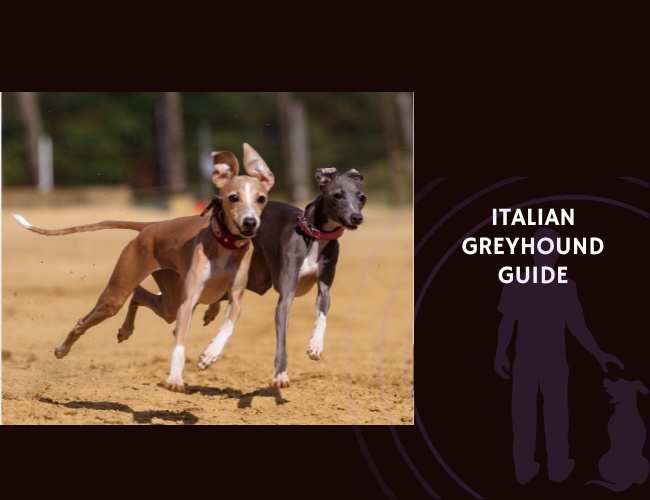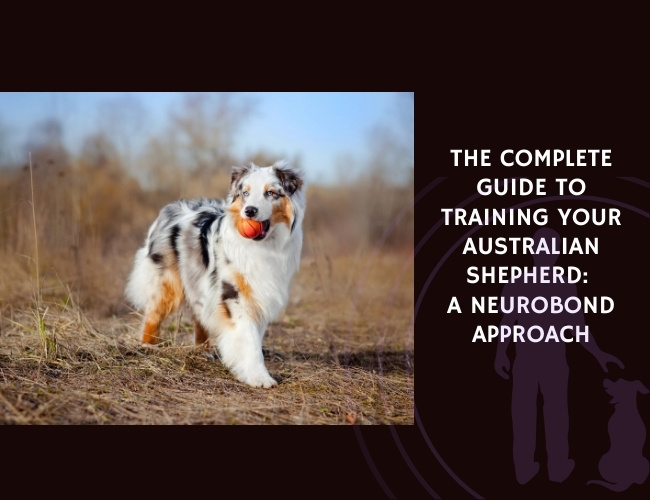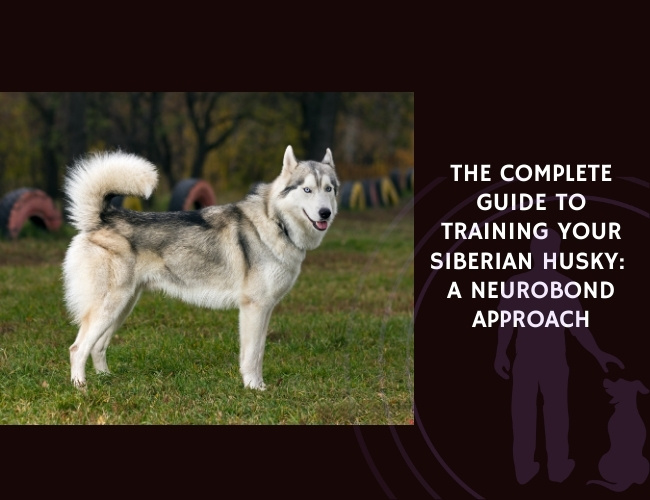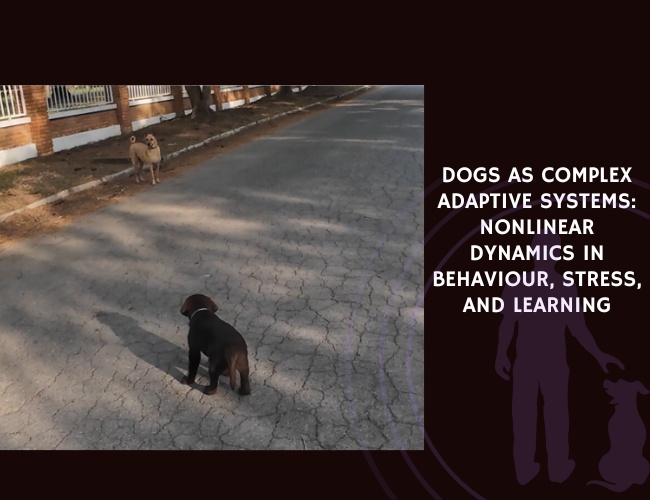Introduction: Meeting the Miniature Aristocrat
Picture a dog that embodies the grace of a gazelle, the heart of a lion, and the soul of a devoted companion—all wrapped in a delicate, 10-pound package. The Italian Greyhound, affectionately known as the “IG” or “Iggy,” has captivated hearts for over 2,000 years, from ancient Egyptian tombs to Renaissance palaces. Today, these elegant sighthounds continue to enchant modern families with their unique blend of athleticism and affection.
Did you know that despite their fragile appearance, Italian Greyhounds possess the same prey drive as their larger Greyhound cousins? This fascinating contradiction—powerful instincts in a delicate frame—makes understanding your IG essential for creating a harmonious life together. Let us guide you through everything you need to know about these remarkable companions, from their complex emotional needs to their surprising athletic abilities.
Whether you’re considering welcoming an IG into your home or seeking to deepen your bond with your current companion, this comprehensive guide will help you understand the unique joys and challenges of living with these miniature aristocrats. 🐾
Character & Behavior
Understanding Your IG’s Inner World
The Emotional Landscape of Your Italian Greyhound
Your Italian Greyhound experiences the world through a lens of heightened sensitivity and deep emotional connection. These dogs form intense bonds with their humans, often displaying what researchers describe as “preoccupied attachment”—a trait that manifests as an almost obsessive devotion to their chosen person. This means your IG might follow you from room to room, always seeking that reassuring presence that tells them all is right with their world.
This deep attachment comes with both gifts and challenges. On one hand, you’ll never lack for companionship—your IG will be your shadow, your confidant, and your most devoted admirer. On the other hand, this intensity of connection can lead to separation anxiety when you’re apart. You might notice your furry friend becoming distressed even during brief absences, displaying behaviors like pacing, whining, or destructive chewing.
Understanding this emotional intensity helps us respond with patience and preparation. Your IG isn’t being “clingy” or “needy”—they’re expressing their natural temperament, shaped by centuries of breeding for close companionship. 🧡
Prey Drive and Visual Triggers: The Hunter Within
Despite their refined appearance, Italian Greyhounds retain the powerful prey drive of their sighthound heritage. This means your elegant companion can transform from couch potato to determined hunter in the blink of an eye. A leaf skittering across the pavement, a squirrel darting up a tree, or even a plastic bag caught in the wind can trigger this ancient instinct.
Key prey drive behaviors to recognize:
- Sudden stillness and intense focus when spotting movement
- Body tensing and leaning forward in preparation to chase
- High-pitched whining or trembling with excitement
- Explosive bursts of speed that seem impossible for such a small dog
This prey drive isn’t something to suppress—it’s part of what makes your IG who they are. Instead, we need to channel it safely through controlled activities and maintain vigilance in open spaces. Remember, your IG can reach speeds up to 25 mph, and their keen eyesight means they’ll spot that rabbit long before you do!
Social Dynamics: Navigating the Canine World
Your Italian Greyhound’s approach to other dogs reflects their unique position in the canine world. Their small size combined with their sighthound confidence creates interesting social dynamics. You might observe your IG displaying submissive behaviors around larger dogs—tucking their tail, lowering their body, or even rolling over—while maintaining a dignified distance from overly boisterous playmates.
Italian Greyhounds often prefer the company of other sighthounds or similarly gentle breeds. They communicate through subtle body language that rougher players might miss entirely. Watch how your IG uses delicate play bows, gentle pawing, and brief chase games rather than the wrestling matches favored by more robust breeds.
Creating positive social experiences involves:
- Choosing playmates carefully based on temperament, not just size
- Supervising all interactions, especially with unfamiliar dogs
- Recognizing when your IG needs a break from social situations
- Building confidence through controlled, positive encounters
Fear Responses and Environmental Sensitivity
Italian Greyhounds experience the world with heightened sensitivity, making them prone to fear responses in novel situations. This isn’t weakness—it’s an evolutionary advantage that helped their ancestors survive. However, in our modern world, this sensitivity requires thoughtful management.
Common environmental triggers include loud noises (thunderstorms, fireworks, construction), unfamiliar surfaces (metal grates, slippery floors), and extreme weather conditions. Your IG might show fear through trembling, freezing in place, attempting to flee, or seeking comfort by pressing against you.
Building environmental resilience takes patience and systematic exposure. Start with low-intensity versions of triggers and pair them with positive experiences. For example, play recordings of thunder at barely audible levels while engaging in favorite activities, gradually increasing volume over weeks or months.
Training & Education: Nurturing Your IG’s Potential
The Art of Positive Reinforcement
Your Italian Greyhound’s sensitive nature makes positive reinforcement not just preferable—it’s essential. These dogs respond to harsh corrections by shutting down emotionally, potentially damaging your carefully built trust. Instead, focus on rewarding desired behaviors with enthusiasm and consistency.
Effective rewards for your IG might include:
- Tiny, soft training treats (remember their small stomachs!)
- Gentle praise in a happy, excited voice
- Brief play sessions with a favorite toy
- Cuddle breaks and gentle petting
The key lies in discovering what motivates your individual dog. Some IGs work enthusiastically for food, while others prefer tactile rewards like gentle scratches behind the ears. Pay attention to what makes your dog’s eyes light up—that’s your training currency.
Mastering Recall: The Ultimate Safety Skill
Teaching reliable recall to an Italian Greyhound presents unique challenges. Their prey drive can override even the strongest training when a squirrel appears, making this potentially life-saving skill require special attention. Start recall training in secure, enclosed spaces with minimal distractions.
Building bombproof recall involves:
- Never calling your dog for something they perceive as negative
- Using a special “recall word” reserved only for emergencies
- Practicing in gradually more distracting environments
- Rewarding generously every single time they come to you
Remember, your IG’s recall might never be 100% reliable when prey is involved. This reality means maintaining vigilance and using secure fencing or long lines in open areas. It’s not a training failure—it’s respecting your dog’s inherent nature while keeping them safe.
House Training: Patience Meets Persistence
House training an Italian Greyhound requires understanding their unique challenges. Their small bladders mean more frequent bathroom breaks, while their low body fat makes them reluctant to eliminate outdoors in cold or wet weather. This combination can extend the house training process beyond what you might expect.
Success comes from consistency and compassion. Establish a regular schedule with bathroom breaks every 2-3 hours for adults (more frequently for puppies). Create positive associations with outdoor elimination through treats and praise. For weather-related reluctance, consider providing a covered potty area or even teaching your IG to use indoor grass patches during extreme conditions.
Watch for subtle signals—circling, sniffing, or heading toward the door. IGs often give less obvious warnings than larger breeds, so staying alert prevents accidents. When accidents happen (and they will), clean thoroughly with enzyme cleaners and adjust your schedule rather than punishing your sensitive companion.
Cognitive Enrichment and Mental Stimulation
Your Italian Greyhound’s intelligence shines when properly engaged. While they may not have the working drive of herding breeds, IGs excel at activities that combine mental challenges with their natural abilities. Puzzle feeders, scent work, and gentle agility exercises provide appropriate stimulation without overwhelming their sensitive nature.
Enrichment activities tailored for IGs:
- Hide-and-seek games with favorite toys or treats
- Simple nose work exercises using cardboard boxes
- Low-impact agility using household items
- Interactive puzzle toys designed for small breeds
Keep training sessions short—5 to 10 minutes maintains focus without causing frustration. End on a positive note, leaving your IG eager for the next session rather than exhausted or overwhelmed.

Nutritional Recommendations: Fueling Your Elegant Athlete
Understanding Your IG’s Unique Metabolic Needs
Italian Greyhounds operate with a metabolism as unique as their appearance. Their low body fat percentage—typically just 15-17% compared to 25-30% in other breeds—means they burn calories quickly and struggle to maintain body temperature. This metabolic quirk requires careful attention to both quantity and quality of nutrition.
Your IG needs nutrient-dense foods that provide sustained energy without overwhelming their small stomach capacity. Look for high-quality proteins as the primary ingredient, moderate fat content for energy, and easily digestible carbohydrates. The goal is maintaining that characteristic lean, muscled physique without allowing weight loss.
Signs of proper nutrition include:
- Visible waist when viewed from above, with slight rib coverage
- Bright, alert eyes and glossy coat
- Consistent energy levels throughout the day
- Regular, well-formed bowel movements
Caloric Requirements and Portion Control
Calculating your Italian Greyhound’s caloric needs requires considering their activity level, age, and individual metabolism. A typical adult IG weighing 10-12 pounds needs approximately 300-400 calories daily, but highly active dogs or those in cold climates may require more.
Rather than free-feeding, divide daily portions into 2-3 smaller meals. This approach prevents blood sugar spikes and maintains steady energy levels. Monitor your IG’s weight weekly—even a pound of weight gain or loss represents a significant percentage of their total body mass.
Managing Digestive Sensitivities
Many Italian Greyhounds experience digestive sensitivities that manifest as loose stools, gas, or vomiting. Common triggers include sudden diet changes, rich foods, or specific protein sources. Identifying and avoiding your IG’s particular sensitivities requires careful observation and potentially an elimination diet supervised by your veterinarian.
Promoting digestive health involves:
- Transitioning foods gradually over 7-10 days
- Avoiding table scraps and high-fat treats
- Providing consistent meal times and portions
- Considering probiotics or digestive enzymes if recommended
Special Nutritional Considerations
Your Italian Greyhound’s unique physiology creates specific nutritional needs beyond basic requirements. Their thin skin benefits from omega-3 fatty acids found in fish oil, while their delicate bones require appropriate calcium and phosphorus ratios. Dental health, a common concern in IGs, improves with foods and treats that promote chewing without being too hard.
During cold weather, your IG may need increased calories to maintain body temperature. Similarly, senior IGs often benefit from joint-supporting supplements like glucosamine and chondroitin. Always consult your veterinarian before adding supplements, as their small size makes proper dosing critical.
Delicate. Driven. Devoted.
Affection isn’t optional—it’s everything.
Italian Greyhounds form intense emotional bonds that define their world. Their need for constant closeness isn’t clinginess—it’s loyalty in its purest form, expressed through shadowing steps, soft eyes, and unwavering presence.
Speed hides stillness.
Behind their explosive sprint lies a soul made for serenity. These gentle hunters burn brightly in bursts, then fold into blankets and dreams. Respecting this dual nature means offering both freedom to fly and comfort to collapse.
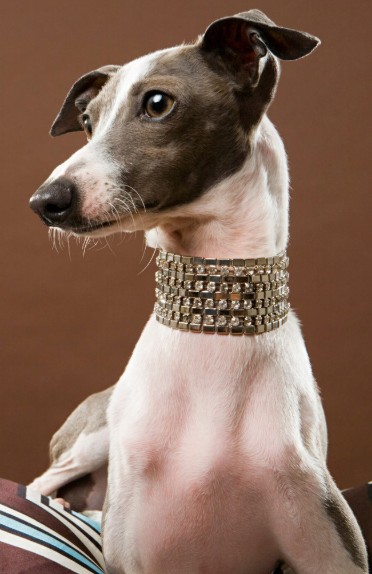
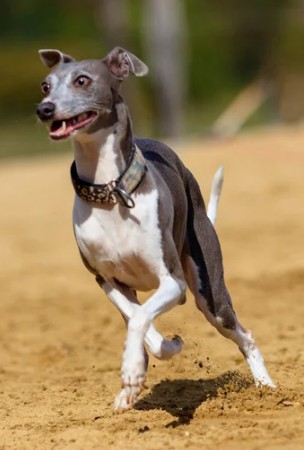
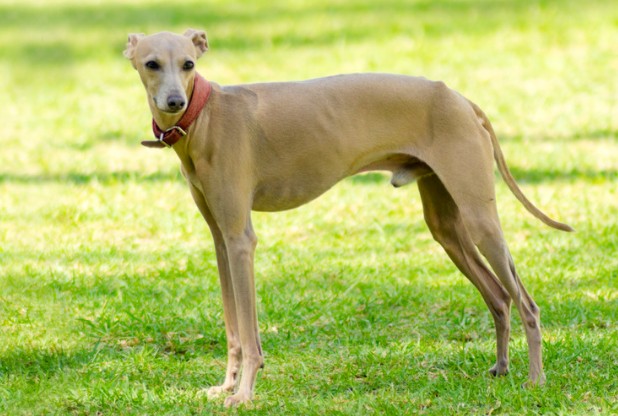
Vulnerability demands awareness.
Fragile in frame but fierce in spirit, IGs require intentional care. From managing their prey drive to guarding their brittle bones, their well-being depends not on control, but on understanding, preparation, and quiet vigilance.
Health Concerns: Protecting Your Delicate Companion
Fracture Prevention and Bone Health
The Italian Greyhound’s elegant build comes with increased fracture risk, particularly in the legs. Their long, slender bones combined with explosive athleticism create a perfect storm for potential injuries. Understanding this vulnerability helps us create safer environments and make informed activity choices.
Fracture prevention strategies include:
- Avoiding jumps from heights (furniture, stairs)
- Using ramps or steps for car and furniture access
- Maintaining safe play environments free from holes or obstacles
- Supervising interactions with larger, rougher dogs
Regular veterinary checkups should include bone density assessments, especially as your IG ages. Proper nutrition, including adequate calcium and vitamin D, supports bone strength throughout life. If fractures occur, modern veterinary techniques offer excellent outcomes when treatment begins promptly.
Dental Disease: The Hidden Threat
Periodontal disease affects Italian Greyhounds earlier and more severely than many breeds. By age three, most IGs show signs of dental issues without preventive care. This isn’t just about bad breath—dental disease can lead to systemic infections affecting the heart, kidneys, and liver.
Daily tooth brushing remains the gold standard for prevention. Start slowly, using dog-specific toothpaste and making the experience positive. If your IG resists brushing, alternatives include dental wipes, water additives, and specially designed chews. Professional cleanings under anesthesia become necessary when tartar accumulation advances despite home care.
Early warning signs of dental disease:
- Red or swollen gums
- Brown tartar accumulation
- Reluctance to eat hard foods
- Pawing at the mouth or face
- Persistent bad breath
Anesthetic Sensitivity and Medical Procedures
Your Italian Greyhound’s low body fat affects how they process medications, particularly anesthetics. This sensitivity doesn’t mean avoiding necessary procedures—it means choosing veterinarians experienced with sighthounds and discussing protocols beforehand.
Before any procedure requiring anesthesia, ensure your veterinary team understands sighthound sensitivities. Pre-anesthetic blood work becomes even more critical, and recovery monitoring should extend longer than for other breeds. Keep your IG warm during recovery, as their minimal body fat makes maintaining body temperature challenging post-anesthesia.
Autoimmune and Skin Conditions
Italian Greyhounds may develop various skin conditions, from simple allergies to more complex autoimmune disorders. Their thin skin shows problems quickly—redness, hair loss, or unusual pigmentation warrant veterinary attention. Color dilution alopecia affects some blue or fawn IGs, causing patchy hair loss without other health impacts.
Environmental allergies often manifest as itchy skin, particularly on the paws and belly. Identifying triggers through elimination or allergy testing helps manage symptoms. Some IGs develop seasonal patterns, requiring preventive treatment during high-allergen periods.
Age-Related Health Management
As your Italian Greyhound enters their senior years (typically around 10-12 years), health monitoring intensifies. Regular blood work catches kidney or liver changes early, while mobility assessments identify arthritis before it significantly impacts quality of life. IGs often maintain their playful spirit well into old age, making subtle changes easy to miss.
Senior IG care considerations:
- Bi-annual veterinary visits instead of annual
- Joint supplements for mobility support
- Modified exercise routines respecting limitations
- Dental care intensification to preserve remaining teeth
- Environmental modifications for safety and comfort

Lifestyle & Environment: Creating the Perfect IG Home
Indoor Living and Space Requirements
Italian Greyhounds thrive as indoor companions, making them ideal for apartment living despite their athletic abilities. Your IG doesn’t need acres to roam—they need a warm, secure environment with comfortable resting spots and opportunities for supervised exercise. Their idea of paradise includes soft blankets, sunny windows, and constant access to their beloved humans.
Creating an IG-friendly home involves thoughtful preparation. Provide multiple cozy beds throughout your living space, as IGs love to follow the sun and their people. Elevated dog beds with soft padding protect delicate joints while satisfying their preference for perching. During colder months, heated beds become especially appreciated.
Essential home modifications for IGs:
- Baby gates to prevent unsupervised stair access
- Non-slip rugs on smooth flooring
- Secure, escape-proof fencing for any outdoor areas
- Draft-free sleeping areas away from air conditioning vents
- Easy access to favorite window perches for sunbathing
Exercise Needs: Quality Over Quantity
Your Italian Greyhound’s exercise needs differ from typical small breeds. While they don’t require hours of activity, they do need opportunities for short bursts of high-intensity exercise. A typical day might include two or three brief walks plus a supervised sprint session in a secure area.
IGs excel at what we call “zoomies”—explosive circular running that satisfies their need for speed. Providing safe spaces for these energy releases prevents frustration and destructive behaviors. A securely fenced yard works wonderfully, but even apartment dwellers can find solutions through dog parks with separate small dog areas or organized playgroups.
Remember that mental stimulation counts as exercise for these intelligent dogs. Puzzle toys, training sessions, and interactive games tire them out as effectively as physical activity. Balance is key—an over-exercised IG becomes prone to injury, while an under-stimulated one develops behavioral issues.
Weather Considerations and Protective Clothing
Your Italian Greyhound’s minimal body fat and thin coat make weather protection essential, not optional. In temperatures below 50°F (10°C), most IGs benefit from clothing. This isn’t about fashion—it’s about health and comfort. Wind, rain, and snow pose particular challenges, potentially causing your IG to refuse outdoor bathroom breaks.
Building a practical IG wardrobe includes:
- Lightweight sweaters for mild cold (50-60°F)
- Insulated coats for winter weather
- Waterproof options for rainy climates
- Fleece pajamas for nighttime warmth
- Protective boots for snow, ice, or hot pavement
Introduce clothing gradually, starting with lightweight options for short periods. Most IGs quickly associate clothes with outdoor adventures and warmth, making dressing a positive experience. Ensure proper fit—too tight restricts movement, while too loose creates tripping hazards.
Rest and Recovery Patterns
Italian Greyhounds master the art of relaxation with the same intensity they bring to play. These dogs typically sleep 18-20 hours daily, curled in impossibly small balls or stretched to surprising lengths. Understanding and respecting these rest needs ensures a well-balanced, content companion.
Your IG will develop preferred resting spots throughout your home, often choosing elevated surfaces that provide security and warmth. They might burrow under blankets, creating cozy nests that satisfy their denning instincts. Providing appropriate bedding in multiple locations prevents resource guarding and ensures comfort regardless of your location in the home.
During rest periods, IGs often experience vivid dreams, complete with running movements and soft vocalizations. This active sleep reflects their sensitive nervous systems processing daily experiences. Avoid startling sleeping IGs—their startle reflex can cause them to snap reflexively before fully awakening.
Family Integration and Child Safety
Integrating your Italian Greyhound into a family with children requires careful planning and ongoing supervision. While IGs can form beautiful bonds with gentle children, their fragile build makes them unsuitable for rough play. Teaching children appropriate interaction prevents injuries to both dog and child.
Guidelines for IG-child interactions:
- Always supervise, regardless of child age or dog experience
- Teach children to interact at floor level rather than carrying the IG
- Establish “safe zones” where the IG can retreat
- Involve children in gentle activities like brushing or training
- Model calm, quiet interaction styles
Older children often become favored companions for IGs, sharing quiet activities like reading or watching television. The key lies in matching energy levels and respecting the IG’s need for gentle handling. When done right, these relationships provide children with lessons in empathy and responsibility while giving your IG additional devoted companions.
Senior Care: Cherishing the Golden Years
Physical Changes and Adaptations
As your Italian Greyhound enters their senior years, typically around age 10, physical changes require thoughtful adaptations. While many IGs maintain remarkable vitality into their teens, subtle shifts in mobility, vision, and hearing deserve attention. Your senior IG might move more deliberately, choosing their steps carefully where they once bounded fearlessly.
Joint stiffness often appears first in the morning or after extended rest. Providing orthopedic bedding with memory foam supports aging joints while maintaining body heat. Consider adding ramps to previously accessible furniture and placing additional water bowls throughout your home to minimize necessary movement.
Supporting senior IG mobility:
- Gentle massage to maintain circulation and flexibility
- Shorter, more frequent walks tailored to energy levels
- Swimming or water therapy for low-impact exercise
- Joint supplements as recommended by your veterinarian
- Non-slip socks for better traction on smooth floors
Cognitive and Emotional Evolution
Your senior Italian Greyhound’s emotional needs often intensify with age. That deep attachment to you might become even stronger, with increased anxiety when separated. Some IGs develop “sundowner’s syndrome,” becoming restless or confused in the evening hours. Maintaining consistent routines provides security during these changes.
Mental stimulation remains crucial but requires adaptation. Simple puzzle feeders, gentle training sessions reviewing known commands, and sniff-enrichment games keep aging minds active without causing frustration. Celebrate small successes—your senior IG’s willingness to engage matters more than perfect performance.
Watch for signs of cognitive dysfunction: disorientation, changes in sleep patterns, house training lapses, or altered social behaviors. Early intervention with veterinary guidance can slow progression and maintain quality of life. Sometimes, simple environmental modifications like nightlights or background music provide significant comfort.
Nutritional Adjustments for Aging IGs
Senior Italian Greyhounds often require dietary modifications to support changing metabolism and health needs. Reduced activity levels mean fewer calories, but protein requirements might actually increase to maintain muscle mass. Work with your veterinarian to find the optimal balance preventing both weight gain and muscle loss.
Key nutritional considerations for seniors:
- Higher quality, easily digestible proteins
- Reduced phosphorus for kidney support
- Added fiber for digestive health
- Omega-3 fatty acids for joint and cognitive function
- Appropriate supplements based on individual health needs
Some senior IGs develop pickier appetites or difficulty chewing. Warming food slightly, adding low-sodium broth, or transitioning to softer options maintains interest in meals. Regular weigh-ins catch concerning weight changes early, allowing prompt intervention.
Quality of Life Considerations
Ensuring quality of life for your senior Italian Greyhound involves honest assessment and difficult decisions. These sensitive dogs often mask discomfort, making careful observation essential. Create a quality of life journal, noting good days and challenging ones, to track patterns objectively.
Pain management becomes increasingly important. Modern veterinary medicine offers numerous options, from traditional medications to alternative therapies like acupuncture or laser treatment. Never assume declining activity stems solely from age—treatable conditions often masquerade as “getting old.”
The deep bond you share with your IG makes end-of-life decisions particularly challenging. Trust your knowledge of your dog’s personality and preferences. When their sparkle dims despite best efforts, choosing a peaceful goodbye becomes the final act of love for these devoted companions who’ve given us so much joy.
Conclusion: Is the Italian Greyhound Right for You?
After exploring the multifaceted world of Italian Greyhounds, you might wonder if this elegant breed matches your lifestyle. These dogs offer unparalleled devotion, surprising athleticism, and endless entertainment wrapped in a delicate, beautiful package. However, they also require understanding, patience, and accommodation of their unique needs.
The ideal Italian Greyhound owner:
- Values deep, emotionally intense canine relationships
- Maintains a stable, relatively quiet home environment
- Commits to weather protection and indoor living
- Understands and respects prey drive limitations
- Provides gentle, positive training approaches
- Accepts higher veterinary needs and fracture risks
- Appreciates both athletic zoomies and marathon napping
If you’re seeking an independent, rough-and-tumble outdoor companion, the IG likely isn’t your match. But if you dream of a sensitive soul who’ll share your couch, follow you devotedly, and make you laugh with their quirky antics, an Italian Greyhound might be your perfect companion.
Remember, bringing an IG into your life means embracing both their strengths and vulnerabilities. These ancient dogs have survived millennia not despite their sensitivity, but because of it. Their ability to form deep bonds with humans, combined with their adaptability to various living situations, makes them remarkable companions for the right people.
Whether you’re taking the first steps toward IG ownership or deepening your understanding of a current companion, remember that every Italian Greyhound is an individual. While breed tendencies provide valuable guidance, your specific dog will teach you their own preferences, quirks, and needs. Listen with your heart, respond with patience, and prepare for a journey filled with elegance, laughter, and unconditional love. 🐾🧡
Next time you see an Italian Greyhound prancing down the street in their stylish coat, you’ll understand they’re not just a fashion statement—they’re a carefully tended treasure, wrapped in love and protected with knowledge. Welcome to the wonderful world of Italian Greyhounds, where every day brings new opportunities to celebrate the unique joy of sharing life with these extraordinary dogs.

